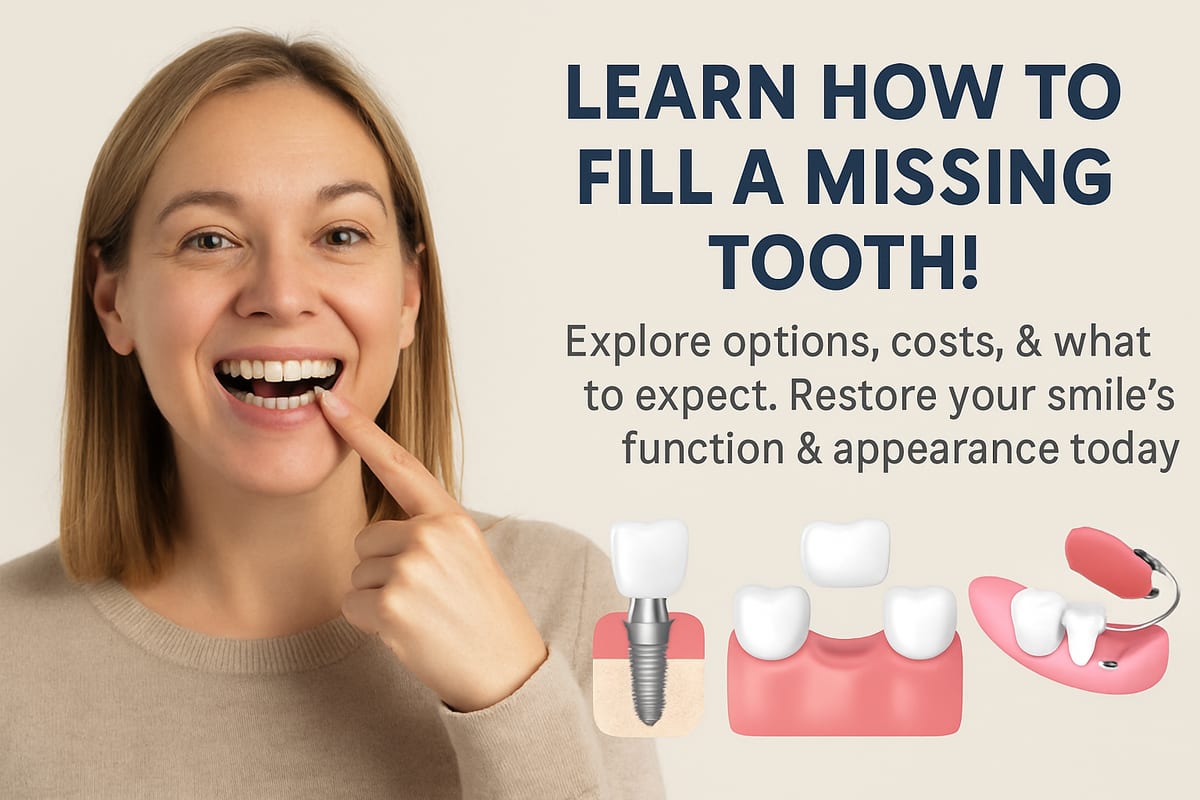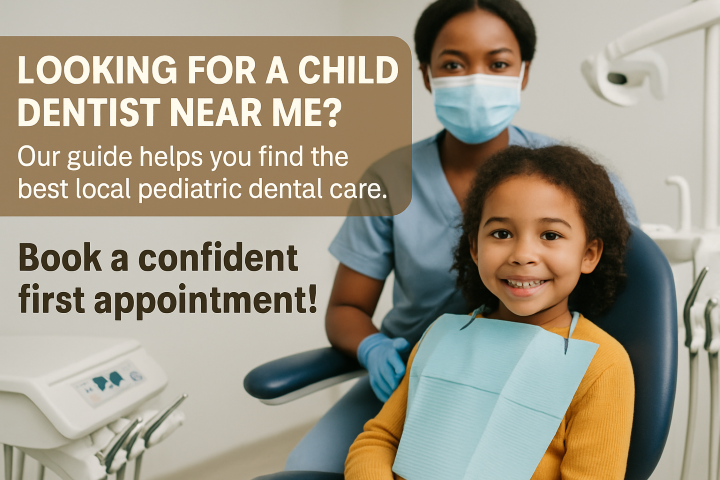Blog - [City], [state]
Tips, Facts, And The
Latest In Dentistry

How To Fill A Missing Tooth: Your Options Including Dental Implants
Posted in Oral Health

If you’re wondering how to fill a missing tooth, you’re not alone. Replacing a gap matters for chewing, speech, appearance, and for keeping the jawbone healthy. Left alone, a missing tooth can cause neighboring teeth to shift, make eating harder, and speed up bone loss where the tooth used to be.
This guide explains common ways to replace a single missing tooth, how to choose the right option, what each treatment feels like, and practical next steps so you can move forward with confidence.
Common Options: How to Fill a Missing Tooth
Removable Partial Denture
A removable partial denture is a plate with one or more replacement teeth that clips onto your remaining teeth. It’s a quick and cost-effective fix.
- Pros: Lower cost, noninvasive, easy to adjust, quick to make.
- Cons: Can feel bulky, may move while eating or speaking, needs daily cleaning and occasional repairs.
Dental Bridge
A fixed dental bridge uses crowns on the teeth next to the gap to support a false tooth in the middle. It’s a permanent-feeling solution that restores function and looks.
- When used: Best when adjacent teeth already need crowns or are strong enough to support a bridge.
- Trade-offs: Requires reshaping healthy adjacent teeth; does not stop bone loss where the tooth is missing.
Single Dental Implant with Crown
A dental implant replaces the tooth root with a titanium post placed in the jaw, topped by a crown. This option closely mimics a natural tooth.
- Benefits: Preserves bone, won’t affect neighboring teeth, long-lasting with good care, natural feel and chewing strength.
- Considerations: Higher upfront cost and requires healing time after surgery; good candidates need adequate bone or may need grafting.
Resin-Bonded (Maryland) Bridge & Temporary Flippers
Resin-bonded bridges attach a false tooth to adjacent teeth with metal or resin wings. Flippers are temporary plastic dentures for short-term use.
- Best for: Short-term cosmetic fixes, front teeth with low bite force, or when you want a minimally invasive option.
- Limitations: Less durable than fixed bridges or implants and can loosen over time.
How To Choose the Best Way to Fill a Missing Tooth
Choosing how to fill a missing tooth depends on several factors. Think about:
- Location of the gap (front vs. back tooth)
- Amount of jawbone and gum health
- Overall oral health and existing dental work
- Budget and insurance coverage
- How quickly you want treatment done
- Your aesthetic goals and how natural you want the result to look
Good diagnostics matter. Digital X-rays, intraoral photos, and CBCT 3D imaging help your dentist plan safely and predictably. If you’re searching for answers about how to fill a missing tooth in Tulsa, OK, ask for these imaging options during your consultation so your treatment can be tailored to your bone and bite.
What to Expect During Treatment & Recovery
Treatment timelines vary by option:
- Bridge prep: Usually two to three visits over a few weeks for shaping, impressions, and final placement.
- Implant surgery + healing: Implant placement is a minor surgery. Expect a few days of soreness and 3–6 months of healing before the final crown is placed (some cases allow faster timelines with immediate temporaries).
- Denture fittings: Several quick visits to adjust fit and comfort; immediate use is possible for removable options.
Tips for comfort and care:
- Use prescribed or over-the-counter pain meds as directed after surgery.
- Eat soft foods while healing and avoid hard, sticky snacks.
- Keep the area clean—gentle brushing and salt rinses can help after surgery.
- Attend follow-up visits so the dentist can check healing and fit.
Long-term maintenance differs by choice: bridges need careful cleaning under the false tooth, implants are cleaned like natural teeth, and dentures require nightly removal and routine relines or repairs.
Why Choose Dental Arts of Oklahoma to Fill a Missing Tooth
Dental Arts of Oklahoma offers full-scope care across Catoosa, Tulsa, Bixby, Locust Grove, and Nowata. If you’re thinking about how to fill a missing tooth in Catoosa, OK or nearby communities, our team uses modern diagnostics—CBCT, digital X-rays, and intraoral cameras—to plan safe, predictable care. Dr. Soren Michaelsen leads a skilled team experienced in single implants, bridges, and full-arch solutions like All-on-4® when more extensive replacement is needed.
We focus on patient comfort, clear pricing, and long-term results. To learn which option fits your needs and timeline, schedule a consultation to review personalized treatment plans and next steps.
Ready to discuss options? Call or book a consultation to review X-rays, discuss costs, and start a plan to restore function and confidence to your smile.


